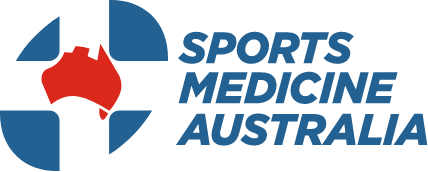
It is our pleasure to congratulate SMA member, Dr Luke Nelson on his appointment to President of Sports Chiropractic Australia (SCA).
Dr Nelson has been a hardworking, loyal member of SMA for several years now. A member of the Victorian State Council since 2015, he has made a significant contribution to the organisation by generously volunteering his time and expertise to help create high quality professional development events for Victoria. Luke is based at Chiropractic Solutions, Bentleigh.
As the newly appointed President of SCA, we asked Luke some questions about his passion for chiropractic, highlights of his professional career so far and his vision for SCA in the future.
How did you get involved with sports chiropractic? How did you know this is what you wanted to do?
I’ve always enjoyed playing sport since I was young, and during high school developed an interest in health, and more specifically, the science of exercise. My passion for health led me to study chiropractic. After I finished my chiropractic studies, I attended my first Sports chiropractic seminar and was blown away with the wealth of information presented. This sparked my never- ending thirst for knowledge that sports medicine provides.
What are some areas of sports chiropractic which you are passionate about? What do you love about your job?
What I love most about my job is helping athletes and weekend warriors achieve their sporting and exercise goals. We may play a small part in their success but it can be incredibly satisfying. Additionally, growing up playing team sports, I enjoy the camaraderie that comes with working as part of the sports medicine team.
What have been some professional highlights in your career as a chiropractor?
My career highlight thus far was working at the World Games in Poland last year. I was fortunate to be selected as a member of the Sports Chiropractic contingent assembled by the International Federation of Sports Chiropractic (FICS). The World Games are an international multi-sport event, meant for sports, or disciplines, or events within a sport, that are not contested in the Olympic Games. It was an incredible experience: we treated athletes, volunteers, coaches, officials and other medical staff. They were all very appreciative of our help, and it was great to see sports chiropractic integrated into the medical team.
As the newly appointed President of Sports Chiropractic Australia (SCA), what is your vision for SCA in the future? Goals for organisation, etc?
Sports Chiropractic Australia as an organization was formed in the early 1980s and since that time, we have had some incredibly dedicated individuals grow the organization. I was very fortunate to be given the responsibility of President at our recent National Conference. My predecessor, James Matthews, has done some fantastic work, so my job is to ensure the continued growth of the organization. We currently have around 300 members, and our goal is to reach 500 in the next 2 years.
In addition to the growth of our membership, I would love to see further integration of chiropractic into the Australian sports medicine team. Sports chiropractors have historically been left on the outer of many sports medicine teams, including the recent Gold Coast Commonwealth games. We have some incredibly talented clinicians who would be valuable assets to many sports medicine teams. We will continue to strive to develop stronger ties with the other sports medicine discipline groups, which will hopefully then give us the opportunity to contribute. The perception of chiropractic in the past has been that we only treat the spine, and we only manipulate and rely on passive modalities. Sports chiropractors however, are multimodal in their treatment approach, utilize rehab principles and treat a wide variety of musculoskeletal conditions. So we also hope to educate others what differentiates us, and our unique skill set.
What advice do you have for early career chiropractors, or chiropractic students, hoping to get the best start in their career?
1. Sign up! If you aren’t a member of both SMA and SCA you should be! SCA offers FREE membership to students and SMA student membership is just $50
2. Get involved! Sports Chiropractic Australia are involved with a number of events Australia-wide, including the upcoming World Lifesaving Championships in Glenelg. Working at these events is a great learning experience and always a lot of fun!
3. Attend as many conferences as you can! The SMA national conference and the SCA national symposium are two of the best on offer in Australia for sports chiropractors. There is plenty to learn, in addition to fantastic networking opportunities.
4. Observe as many practitioners as you can! Not just chiropractors, but physiotherapists, sports doctors, podiatrists, surgeons, dietitians and strength & conditioning coaches. I have learnt so much by observing other health practitioners
5. Get your Level 1 sports trainer certification through SMA. This is a great way to get involved in sports teams whilst studying or early in practice.
How long have you been a volunteer on the SMA Victorian State Council? How did you get involved?
I have been fortunate enough to serve on the Victorian Committee of SMA since 2015. I have attended Sports Medicine Australia events for years and love the multidisciplinary, inclusive nature that the organization embodies. When the opportunity arose to volunteer for the board, I jumped at the opportunity.
We now have chiropractors on three of the SMA State Committees, and our SCA Past President, Pete Garbutt was the outgoing SMA ACT President before the National SMA was introduced. Pete also had the honour of being inducted as an SMA Fellow in 2015.
How does your SMA membership complement your membership with other organisations like SCA and CAA?
SMA provides the opportunity to engage and interact with other members and professionals of the sports medicine team. In addition, SMA provides high quality continuing education to help us deliver high quality, evidenced based care, and become better clinicians.
